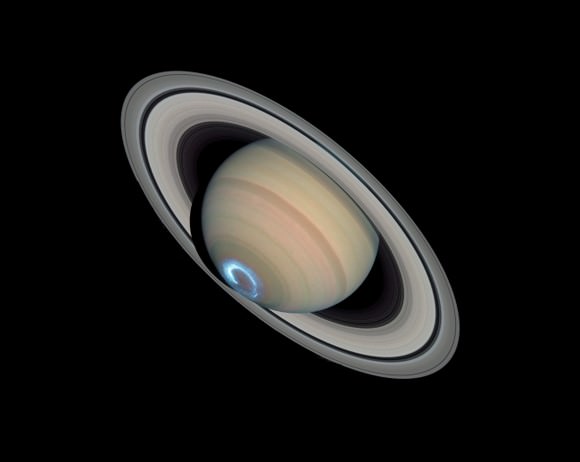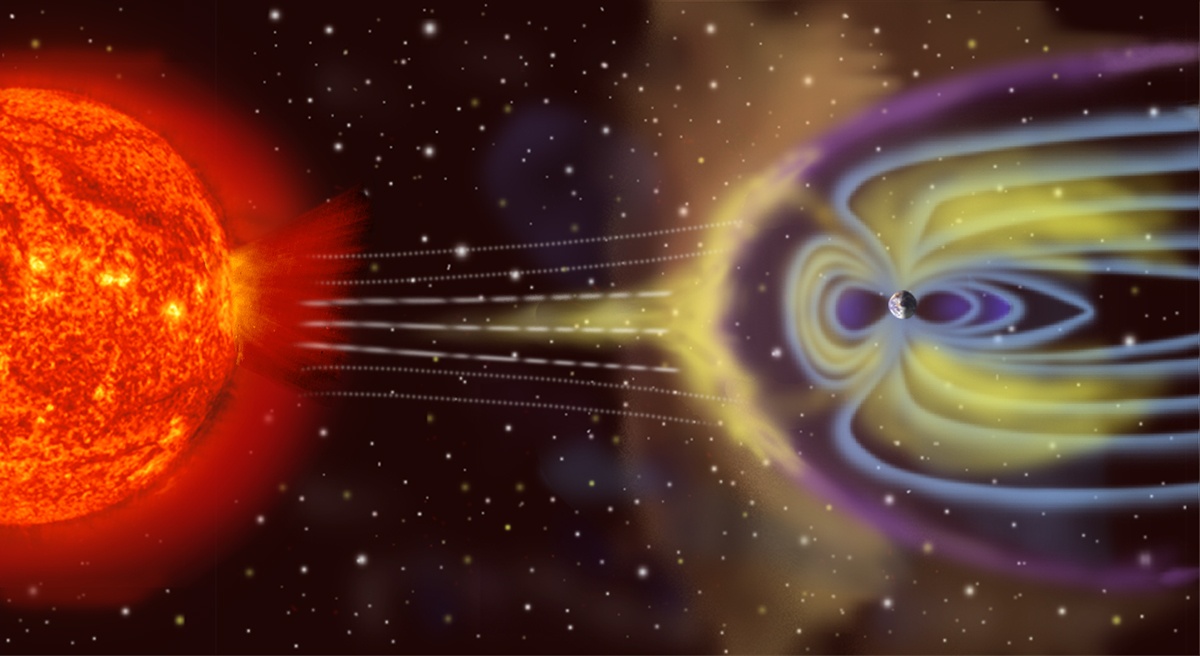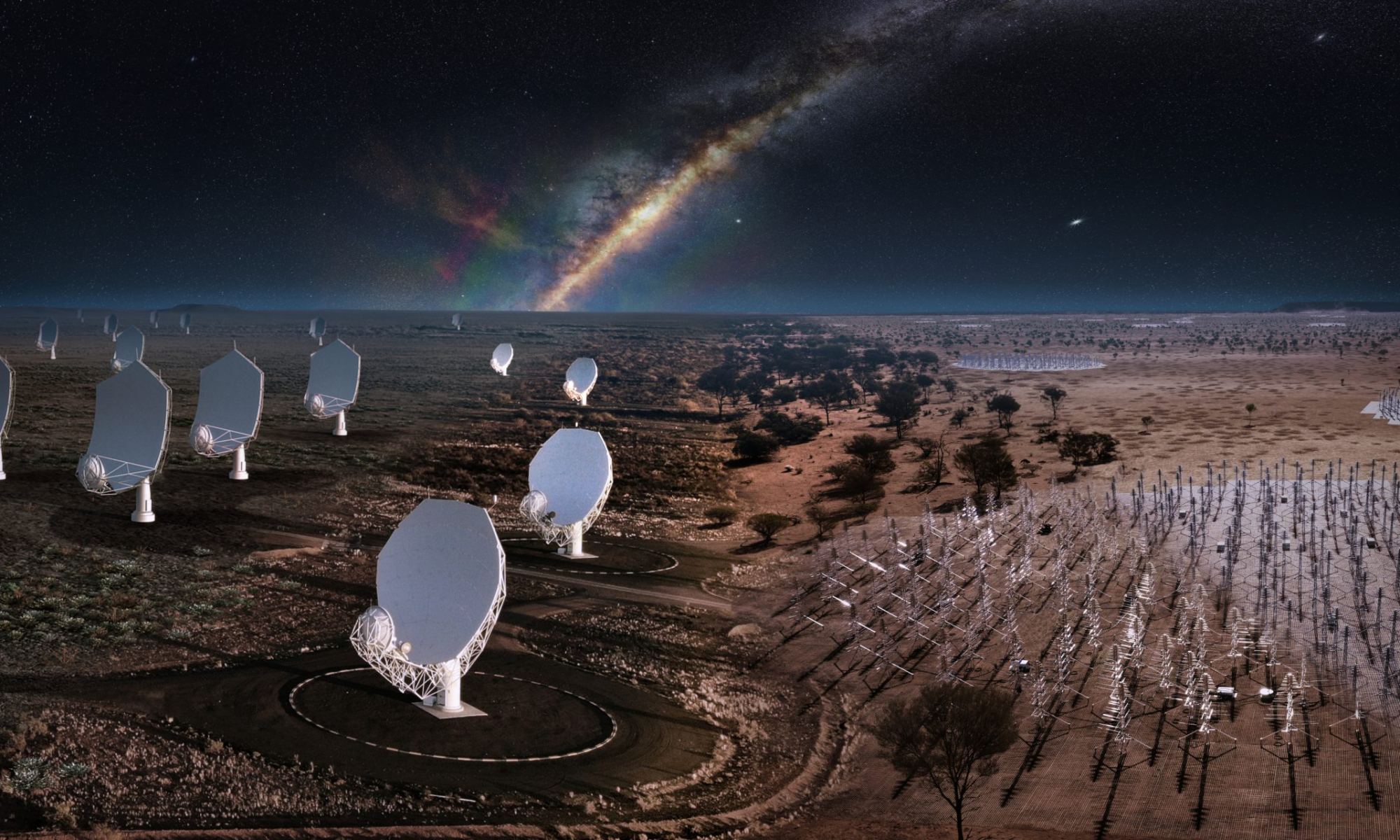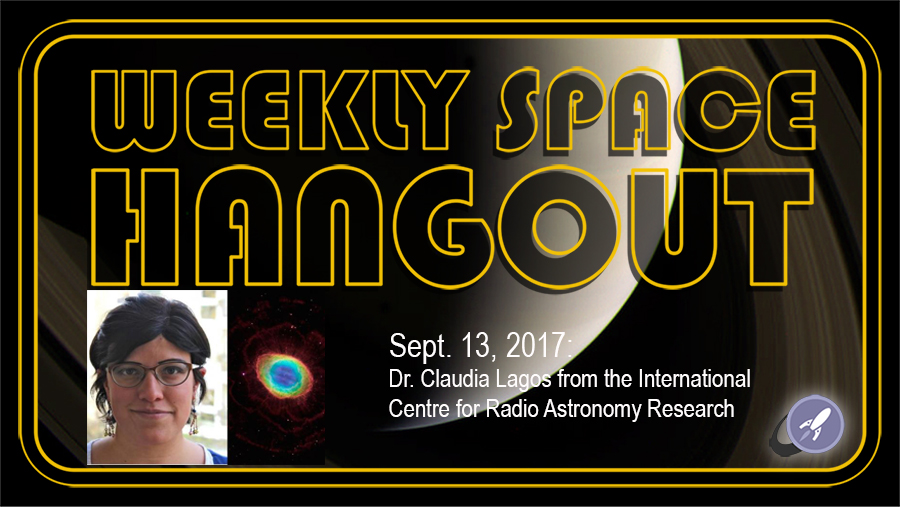Life on Earth would not be possible without food, water, light, a breathable atmosphere and surprisingly, a magnetic field. Without it, Earth, and its inhabitants would be subjected to the harmful radiation from space making life here, impossible. If we find exoplanets with similar magnetospheres then those worlds may well be habitable. The Square Kilometer Array (SKA) which is still under construction should be able to detect such magnetospheres from radio emissions giving us real insight into our exoplanet cousins.
Continue reading “Measuring Exoplanetary Magnetospheres with the Square Kilometer Array”Planets Orbiting Pulsars Should Have Strange and Beautiful Auroras. And We Could Detect Them
We have been treated to some amazing aurora displays over recent months. The enigmatic lights are caused by charged particles from the Sun rushing across space and on arrival, causing the gas in the atmosphere to glow. Now researchers believe that even on exoplanets around pulsars we may just find aurora, and they may even be detectable.
Continue reading “Planets Orbiting Pulsars Should Have Strange and Beautiful Auroras. And We Could Detect Them”The Square Kilometer Array has Gotten the Official Green Light to Begin Construction
In Australia and South Africa, there are a series of radio telescopes that will be soon joined by a number of newly-constructed facilities to form the Square Kilometer Array (SKA). Once established, the SKA will have a collecting area that measures a million square meters (close to 2 million square yards). It will also be 50 times more sensitive than any radio telescope currently in operation, and be able to conduct surveys ten thousand times faster.
During a historic meeting that took place on June 29th, 2021, the member states that make up the SKAO Council voted to commence construction. By the late 2020s, when it’s expected to gather its first light, the array will consist of thousands of dishes and up to a million low-frequency antennas. These will enable it to conduct all kinds of scientific operations, from scanning the earliest periods in the Universe to searching for extraterrestrial intelligence (SETI).
Continue reading “The Square Kilometer Array has Gotten the Official Green Light to Begin Construction”Weekly Space Hangout -Sept 13, 2017: Dr. Claudia Lagos from ICRAR
Hosts:
Fraser Cain (universetoday.com / @fcain)
Dr. Paul M. Sutter (pmsutter.com / @PaulMattSutter)
Dr. Kimberly Cartier ( KimberlyCartier.org / @AstroKimCartier )
Dr. Morgan Rehnberg (MorganRehnberg.com / @MorganRehnberg ChartYourWorld.org)
Special Guest:
This week’s guest is Dr. Claudia Lagos (@CDPLagos).
Claudia is the Research Assistant at the International Centre for Radio Astronomy Research, in the University of Western Australia. Dr. Lagos is one of the core researchers for the Cosmic Dawn Centre (DAWN). Her expertise is in modelling of physical processes in galaxies, such as gas accretion onto galaxies, star formation, stellar feedback, gas accretion onto black holes, among other similar mechanisms.
Their stories this week:
We use a tool called Trello to submit and vote on stories we would like to see covered each week, and then Fraser will be selecting the stories from there. Here is the link to the Trello WSH page (http://bit.ly/WSHVote), which you can see without logging in. If you’d like to vote, just create a login and help us decide what to cover!
Announcements:
If you would like to join the Weekly Space Hangout Crew, visit their site here and sign up. They’re a great team who can help you join our online discussions!
We record the Weekly Space Hangout every Wednesday at 5:00 pm Pacific / 8:00 pm Eastern. You can watch us live on Universe Today, or the Weekly Space Hangout YouTube page
Supermassive Black Holes In Distant Galaxies Are Mysteriously Aligned

In 1974, astronomers detected a massive source of radio wave emissions coming from the center of our galaxy. Within a few decades time, it was concluded that the radio wave source corresponded to a particularly large, spinning black hole. Known as Sagittarius A, this particular black hole is so large that only the designation “supermassive” would do. Since its discovery, astronomers have come to conclude that supermassive black holes (SMBHs) lie at the center of almost all of the known massive galaxies.
But thanks to a recent radio imaging by a team of researchers from the University of Cape Town and University of the Western Cape, in South Africa, it has been further determined that in a region of the distant universe, the SMBHs are all spinning out radio jets in the same direction. This finding, which shows an alignment of the jets of galaxies over a large volume of space, is the first of its kind, and could tell us much about the early Universe.
Continue reading “Supermassive Black Holes In Distant Galaxies Are Mysteriously Aligned”
How Saturn’s Magnetic Activity Could Help us Pinpoint Time on the Ringed Planet

He’s not even finished his first university degree yet, but Tim Kennelly is already part of a team that is altering our perception of time on Saturn.
The University of Iowa undergrad — in junior year, yet — led a paper describing activity in Saturn’s magnetosphere, where charged particles collect and sometimes form auroras. The process changes with the Saturnian seasons and could, the university stated, help scientists better understand how long a Saturn day lasts.
The researchers used information from NASA’s Cassini spacecraft, which has been orbiting the planet and its moons since 2004. The research challenge: Saturn is a gas giant full of layers that each have their own rotational speed. That makes it hard to figure out how long Saturn’s day is. (It’s about 10 hours, but varies by latitude.)
Kennelly made direct observations of seasonal changes in a phenomenon known as Saturn kilometric radiation (SKR). This robust radio signal was first discovered several decades ago and is being examined more closely by Cassini.
“UI space physicist Donald Gurnett and other scientists showed that the north and south poles have their own SKR ‘days’ that vary over periods of weeks and years,” the university stated. “How these different periods arise and are driven through the magnetosphere has become a central question of the Cassini mission, according to NASA officials.”
Kennelly observed, from looking at data collected between 2004 and 2011, that SKAs are linked with “flux tubes” that are made up of plasma, or superhot gas. These tubes happen around the same time of instances of SKAs in the northern and southern hemisphere, which changes seasonally.
It’s possible that this understanding could be carried over to other planets, the university stated, including our own.
“This finding may alter how scientists look at the Earth’s magnetosphere and the Van Allen radiation belts that affect a variety of activities at Earth ranging from space flight safety to satellite and cell phone communications,” it added.
This won’t be Kennelly’s only degree. He is about to apply to graduate schools, and he has aims to earn a doctorate in plasma physics.
“I’m pleased to have contributed to our understanding of Saturn’s magnetosphere so early in my career,” stated Kennelly. “I hope this trend continues.”
The research is described in the American Geophysical Union’s Journal of Geophysical Research.
Source: University of Iowa




